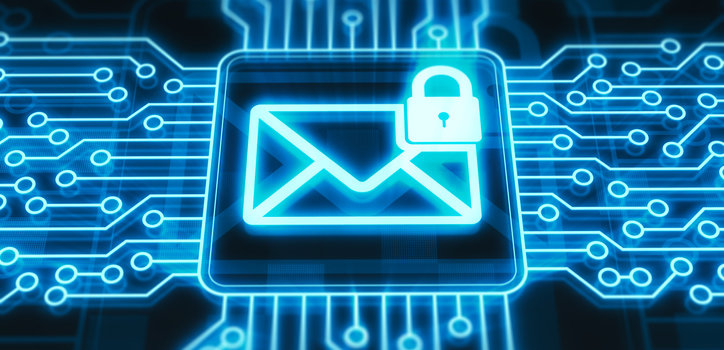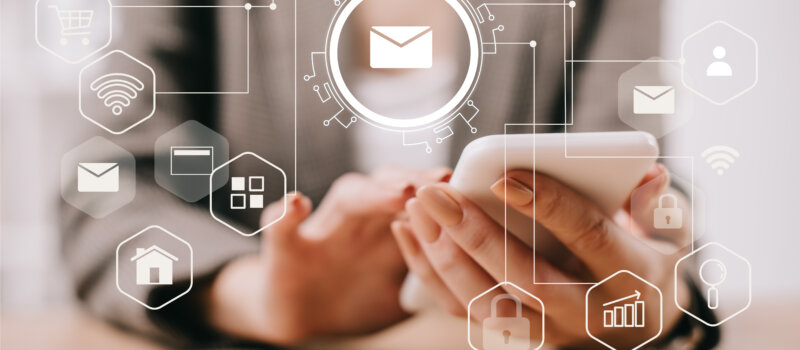Email is a critical channel for communication for any business. In highly regulated industries, the security requirements for email differ depending on the information it contains. That means you need a secure email exchange to meet compliance. But how do you know if your email solution is really secure and compliant?
The answer depends on the configuration of the email exchange and its features. Let’s take a look at what your system needs to ensure security and compliance.
What Compliance Regulations Require Email Exchange Security?
Several regulations impact email communication. The most prominent of those is HIPAA, which applies to PHI (protected healthcare information). It affects any healthcare organization or vendor to the space and requires them to protect PHI via encryption.
Additionally, other regulations include:
- GDPR (General Data Protection Regulation), which impacts any organization that collects data from citizens in the European Union.
- FINRA (Financial Industry Regulatory Authority), which impacts organizations relating to investment banking.
- SOX (Sarbanes-Oxley Act), which applies to publicly traded companies.
What Constitutes a Secure Email Exchange?
There are multiple components necessary for secure email. When evaluating your current email or looking to upgrade, these are the areas to focus on regarding security and compliance.
Email Encryption
Email encryption describes the process of protecting content when exchanged in the channel. It ensures that only the intended recipient can access the content. Encryption has two subsets: in transit and at rest. Both require protection and should use technology like Public Key Infrastructure (PKI), S/MIME, and X.509 certificates to verify confidentiality, authenticate users, and ensure message integrity.
Email encryption doesn’t require your users to make any changes. Instead, admins can determine which regulations are relevant to their business and then build rules. Your email provider hosts the hardware and software, but you have control privileges, allowing you to determine the exact security profile, including monitoring for certain words or going more in-depth to develop complex rule chains.
Scanning Capabilities Prevent Email Leaks and Data Breaches
The worst possible outcome of an email with secure information is a leak or breach. With these rules in place, if a user doesn’t follow them for information that should be encrypted, the system returns it to the sender or deletes it. Not only is the body of the email scanned, but attachments are, as well.
It also doesn’t matter from what device the email originates. It could be from a smartphone, Windows app, or desktop.
Email Encryption and HIPAA Compliance Templates
Another key thing to consider with encryption is HIPAA compliance templates. These templates include preconfigured compliance code sets, keywords, and policies that adhere to all measures regarding PHI in email communication.
More Ways to Build a Secure Email Exchange for Your Business
Encryption of emails is the foundation for a secure email solution. There are more layers of protection to add, as well.
Minimize Threats with Advanced Technology
Phishing emails are a significant concern for any organization. They are a leading cause of data breaches. While you should educate employees on the topic, you also need to be aware that they are often the weak link. Build in more protection with technology that scans for and filters out these messages and spam.
But what if those emails still make it to an inbox? It could happen, so installing one more safeguard for point-of-click protection is a good idea. Basically, it blocks a user from accessing known phishing sites or a web page with malicious code. The technology can live scan a page. If it detects something, it alerts the user.
Anti-virus engines are crucial to detecting email threats, and advanced technology like AI is now poised to support targeted attack protection. AI can flag emails that look suspicious into an attack category. It can automate remediation if necessary and protects in real-time.
Keep Software Up to Date
One major cause of noncompliance or security incidents is the failure to patch software. Exchange should auto-update with any new fixes. You can’t easily do this unless the cloud hosts the email exchange. With this model, every device connected to your network gets the update.
Protect Data that Leaves Your Organization
Email communication and sharing of confidential information happen both internally and externally. Sending data outside your organization can include the same encryption rules, which protect from intentional or accidental data leakage. With this in place, outbound users get alerts about security measures.
Choose a Credentialed Provider
The best way to ensure you have the proper encryption configurations and the most sophisticated protection technology is to work with a credentialed provider. That means using the cloud, which is safer and more flexible than an on-premises solution. In addition, you don’t have to worry about developing a top-tier infrastructure; a credentialed partner has this. The best way to gauge this is to:
- Understand their encryption methods.
- Review all their tools to prevent and remediate threats.
- Receive confirmation that they meet compliance mandates through certifications or auditing standards.
How Secure Is Your Email Exchange?
In reviewing all these security and compliance elements, you may realize there are serious gaps in your current solution. So be proactive in fortifying it to ensure your email doesn’t cause a breach, which could result in regulatory fines and reputational harm. Get more information on email security by reading our whitepaper, A Guide to Security and Privacy in an Exchange Email Environment.
August 25, 2021
Explore other posts on these topics:



